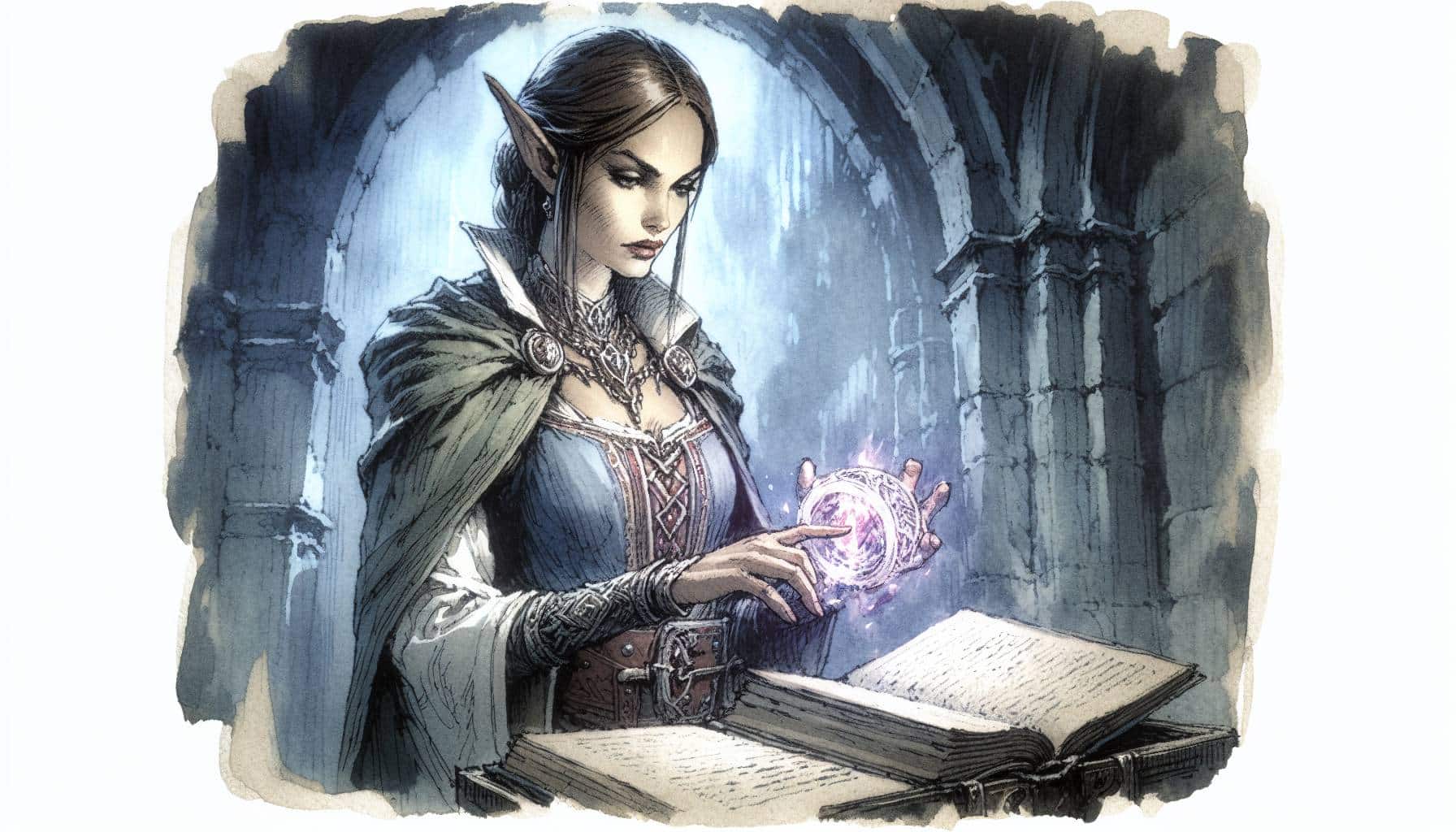Ah, the dazzling appeal of magic items in Dungeons & Dragons—the enticing promise of power that draws players into audacious quests through fantastical realms. For adventurers, these objects are not mere trinkets or curiosities; they are extraordinary treasures infused with potential. They have the ability to shape the very narrative and unlock unimaginable abilities. The essence of D&D is woven with the threads of creativity, and magic items are essential to this tapestry, serving as key components that enhance epic stories and legendary exploits.
Within the vast universe of D&D, magic items take on various roles, ranging from life-saving artifacts to sources of comedic relief. These enchanted marvels can be anything from epic swords that resonate with the voices of their defeated foes to rings that enable communication with animals, providing not only power but also enriching plot experiences. For instance, consider a wandering bard who prefers the company of the local wildlife over the clamor of bardic competitions. With a ring that allows him to converse with animals, he unwittingly becomes a mediator in a dispute among forest creatures, adding layers of charm and humor to his adventures.
Magic items transcend the realm of mere collectibles; they are dynamic engines of narrative enchantment that inspire strategic thinking, creativity, and often lead to comical misadventures that keep both players and Dungeon Masters on their toes. The creativity sparked by these artifacts encourages players to think outside the box, promoting inventive solutions and collaborative storytelling that elevate their campaigns to extraordinary heights. Imagine a group of adventurers stealthily scuba diving into an underwater lair, armed with a magical trident that grants them the ability to breathe underwater. The ensuing confrontation with a merfolk guardian could easily veer into chaos when the rogue, thinking on their feet, decides to use the trident not as a weapon but as an improvised tool to attract nearby fish for distraction, resulting in unexpected laughter and teamwork.
Striking a balance between power and plot—a delicate dance indeed—is essential as game masters decide the role of magic items in their campaigns. If too much raw power is introduced, the epic narrative can quickly devolve into a farcical spectacle. Players might find themselves whimsically wielding the “Wand of Total Plot Derailment,” transforming strategic encounters into nonsensical scenarios, turning foes into inanimate objects or swapping roles with party members, thus undermining the intentional flow of the story. Conversely, if adventurers are equipped with items that are too mundane or restrictive, they may feel as though they are wielding butter knives against a dragon, leading to a frustrating and uneventful experience.
It is this quest for balance that enriches gameplay; the excitement of discovery intertwined with strategic thought is what keeps seasoned adventurers at the edge of their seats. Introducing magic items at the right moments or crafting unique ones that resonate with the characters’ personalities can transform the ordinary into the extraordinary. Perhaps a wizard plagued by self-doubt during a crucial moment stumbles upon an enchanted bookmark that temporarily boosts their confidence, enhancing their spellcasting in delightful and unexpected ways.
The enchanting allure of magic items in Dungeons & Dragons goes beyond their superficial charm. They enhance not only the characters who wield them but also the narrative tapestry that writers and players weave together, fostering a spirit of exploration, experimentation, and collaboration in a shared universe. Whether serving as tools for wildly imaginative strategies or sparking humorous misadventures, magic items remain a cornerstone of the D&D experience, epitomizing the adventurous spirit that defines this cherished tabletop role-playing game.
The Allure of Magic Items in D&D
Magic items are integral to the D&D experience, serving as both carrot and stick in the grand narrative. They feed into the lore of the game, enticing characters through tales of legendary blades and enchanted amulets that shaped history itself. The enchantment of these items is not only in what they do but in what they represent: ambition, achievement, and the untold stories behind their creation. Players, driven by ambition and curiosity, often find their character arcs propelled forward by the acquisition, loss, or quest for magic items. These items are much more than physical assets; they are the catalysts of character transformation and plot progression.
Try my AI Tabletop RPG generators...and an extensive library of content!
Magic items can embody a character’s development, reflecting their growth as heroes or villains. A paladin’s holy sword may serve as a symbol of their oath, while a rogue’s shadowy cloak could speak to their penchant for stealth and mischief. As such, these artifacts drive narratives onward, offering both challenge and reward to intrepid players. As the campaign unfolds, the lore behind an item can be just as compelling as its abilities, offering tantalizing hints of ancient mysteries and forgotten kingdoms.

Categorizing Magic Items: From the Mundane to the Magnificent
Magic items in D&D range from humble potions to awe-inspiring relics of untold power. Categorizing these items helps maintain a balanced campaign, ensuring players progressively access more potent abilities as they advance. Common items, such as healing potions and basic enchanted weapons, provide the bread-and-butter of adventurers’ gear. Uncommon and rare items, with unique abilities or situational benefits, often become the sought-after prizes of mid-level parties, adding depth and nuance to encounters.
As players reach higher levels, they might encounter very rare and legendary items. These are the stuff of legend—the Sword of Kas or the Rod of Seven Parts—capable of altering the course of a campaign. While alluring, these items demand careful consideration, as their power can easily upset the campaign’s balance if not introduced wisely.
Magic items, in their various forms, are the adventurer’s dearest companions, offering a blend of utility and narrative flair. Yet, DMs must wield these treasures with care, avoiding the pitfalls of imbalance while fostering creativity and storytelling. Tailoring custom items for your campaign can add a personal touch, ensuring that loot feels both integral and exciting.
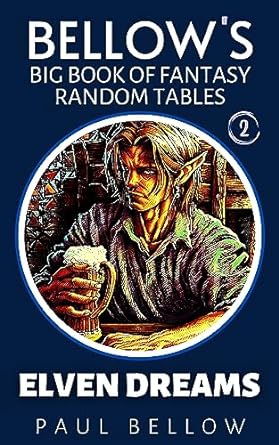
Fantasy RPG AI Generators with ChatGPT+
Make life as a Game Master easier.... If you play Dungeon & Dragons, Pathfinder, or other fantasy tabletop role-playing games, check out my DND character backstory generator and other fine AI RPG tools at LitRPG Adventures Workshop today.
Essential Loot for Every Adventuring Party
Every adventuring party should have a selection of essential magic items to survive and thrive in the treacherous world of D&D. These items not only serve practical purposes but also offer unique quirks and potential plot hooks, spicing up any campaign.
- Bag of Holding: A lifesaver for adventurers with packrat tendencies, this bag holds more than it seems, perfect for smuggling contraband or storing dragon hoards.
- Immovable Rod: A versatile tool for creative thinkers, useful for everything from blocking doors to making impromptu platforms.
- Ring of Feather Falling: Essential for high-flying escapades or when adventurers can’t resist vertiginous vistas.
- Cloak of Elvenkind: Grants the wearer stealth and charm, assisting in both sneaky endeavors and diplomatic negotiations.
- Boots of Striding and Springing: Ideal for escape artists, these boots allow for quick retreats or incredible leaps.
- Decanter of Endless Water: Perfect for survivalists, this item ensures the party never thirsts and can create dramatic waterworks.
- Amulet of Health: Vital for bolstering the party’s tank, this amulet increases Constitution and overall resilience.
- Alchemy Jug: A quirky item with practical uses, from producing mayonnaise for sandwich lovers to providing gallons of ale for celebration.
- Bracers of Archery: An archer’s dream, these bracers improve aim and damage, making them indispensable in ranged combat.
- Boots of the Winterlands: Protect against cold environments and ensure safe passage through icy terrains.
- Cape of the Mountebank: Facilitates daring escapes or spectacular entrances with its dimension door ability.
- Ring of Mind Shielding: Useful for avoiding unwanted scrying or mind-reading, keeping secrets safe.
- Gloves of Thievery: Perfect for pickpockets and sleight-of-hand specialists, granting bonuses to dexterous deeds.
- Rope of Climbing: Simplifies otherwise dangerous climbs, and can be animated for creative solutions in a pinch.
Variety is the spice of life—and loot. A diverse mix of magic items ensures players remain engaged and surprised, with each discovery bringing new possibilities. DMs are encouraged to venture beyond the conventional, introducing unexpected items that tie into the campaign’s narrative or environment in clever ways.
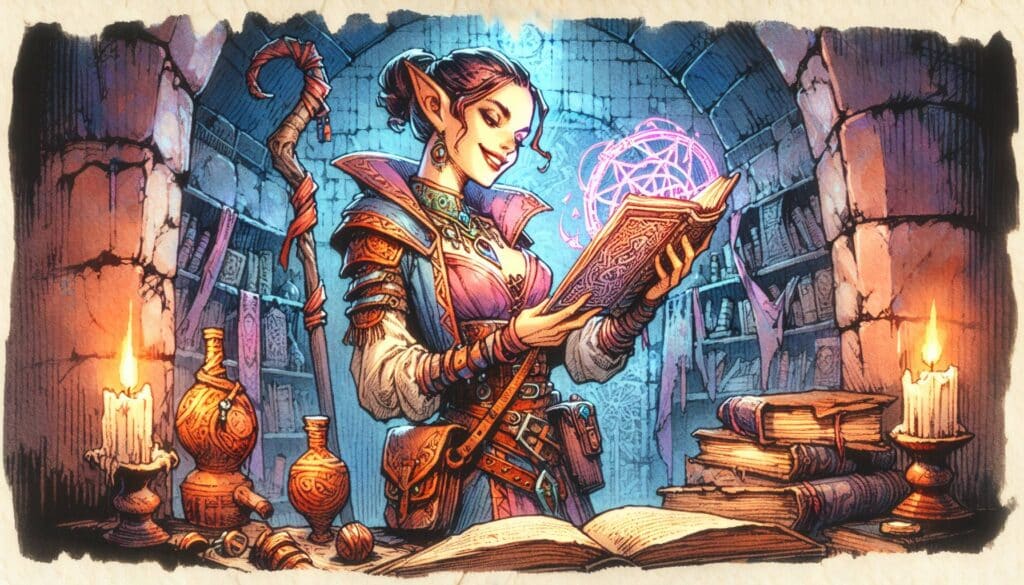
Legendary Artifacts: The Stuff of Legend and Misadventure
Legendary artifacts hold a storied place in the D&D universe, often steeped in deep lore and offering world-altering powers. These artifacts are more than mere possessions; they bear the weight of narrative consequence and moral quandaries for those who wield them.
These legendary items often come with rich backstories that intertwine with the campaign world in profound ways. Whether it’s the storied history of the Sword of Zariel or the mysterious past of the Wand of Orcus, artifacts can drive campaigns toward epic confrontations and character-defining moments.
| Artifact Name | Abilities | Narrative Hooks |
|---|---|---|
| Sword of Zariel | Smites fiends with holy light | Recover the lost sword to defeat a demon lord. |
| Wand of Orcus | Raises undead servants | Can the party resist its dark allure? |
| Helm of Brilliance | Radiates protective fire | Once belonged to a legendary hero, now cursed. |
| Book of Vile Darkness | Grants dark arcane secrets | A dark cult seeks its return. |
| Ring of Winter | Controls ice and snow | Must be destroyed to prevent eternal winter. |
| Staff of the Magi | Channels powerful wizard spells | Rumored to have belonged to a legendary archmage. |
| Talisman of Pure Good | Smite evil, purify magic | Can a fallen paladin redeem themselves with it? |
| Orb of Dragonkind | Command dragons | Stolen by a power-hungry tyrant. |
| Blackrazor | Soul-stealing greatsword | Only a true hero can wield it without falling to its curse. |
| Vorpal Sword | Instantly decapitates foes | Its owner is destined to face a king or god. |
| Rod of Seven Parts | Assembles to grant ultimate power | Scattered across realms, must be united. |
| Hand of Vecna | Grants powerful necromancy | Can you wield it without losing your soul? |
Legendary artifacts should be used sparingly, adding gravitas to the story while maintaining excitement. They can act as both prizes and catalysts for adventure, driving players to seek them out for reasons beyond mere power.
Gear with the Quirkiest Benefits
Among the serious and powerful, there exists a delightful array of quirky magic items. These items, while seemingly minor, can create memorable moments and unique challenges, offering amusement alongside utility.
- Deck of Illusions: Draw a card and create illusory creatures to baffle and bemuse foes—or your own party.
- Wand of Smiles: Forces the target to smile—a charming way to diffuse tension or make a grumpy dragon grin.
- Goggles of Night: Grants darkvision, but in psychedelic colors, adding unexpected flair to dark dungeons.
- Pipe of Smoke Monsters: Puff out whimsical smoke creatures for entertainment or distraction.
- Hat of Disguise: Turn into any humanoid—a perfect, if mischievous, way to crash a royal ball.
- Bag of Tricks: Pull out fuzzy balls that become random creatures, a surprise every time!
- Javelin of Backbiting: Returns to the thrower, sometimes with a bite—ouch!
- Eversmoking Bottle: Produces endless smoke, ideal for theatrical exits or confused enemies.
- Cap of Water Breathing: Turns any bath into an underwater adventure.
- Potion of Gaseous Form: Transform into a mist—great for sneaky escapes or befuddling friends.
- Ring of Jumping: Leap like a frog, perfect for dramatic speeches from atop tables.
- Broom of Flying: Zoom across the battlefield, or clean the lair with flair.
- Slippers of Spider Climbing: Become a wall-crawling hero (or prankster).
Laughter and creativity are invaluable in D&D, as the unpredictable interactions between players and items often lead to the most exciting tales. Encourage free-spirited play and embrace the chaos that quirky gear can bring, as these often inspire the most memorable adventures.
Customizing Items for Your Campaign
Customizing magic items can add a layer of depth and intimacy to any campaign, aligning loot with the setting’s themes and player’s individual journeys. Adapting existing items or creating new ones tailored to the world enhances immersion, making each discovery feel personal.
DMs can use tools such as item crafting rules and homebrew systems to balance custom items. By tying these items to character backstories or pivotal plot points, they can foster deeper player engagement and emotional investment. Collaborative creation, where players contribute ideas for their dream items, can further enhance the narrative connection and inspire unique quests.
Themed loot, when thoughtfully integrated, enriches storytelling and enhances player creativity. Tailor items to complement your campaign’s motifs, be it a nautical-themed artifact for oceanic adventures or a steam-powered device for a steampunk saga.

Fantasy RPG AI Generators with ChatGPT+
Make life as a Game Master easier.... If you play Dungeon & Dragons, Pathfinder, or other fantasy tabletop role-playing games, check out my DND character backstory generator and other fine AI RPG tools at LitRPG Adventures Workshop today.
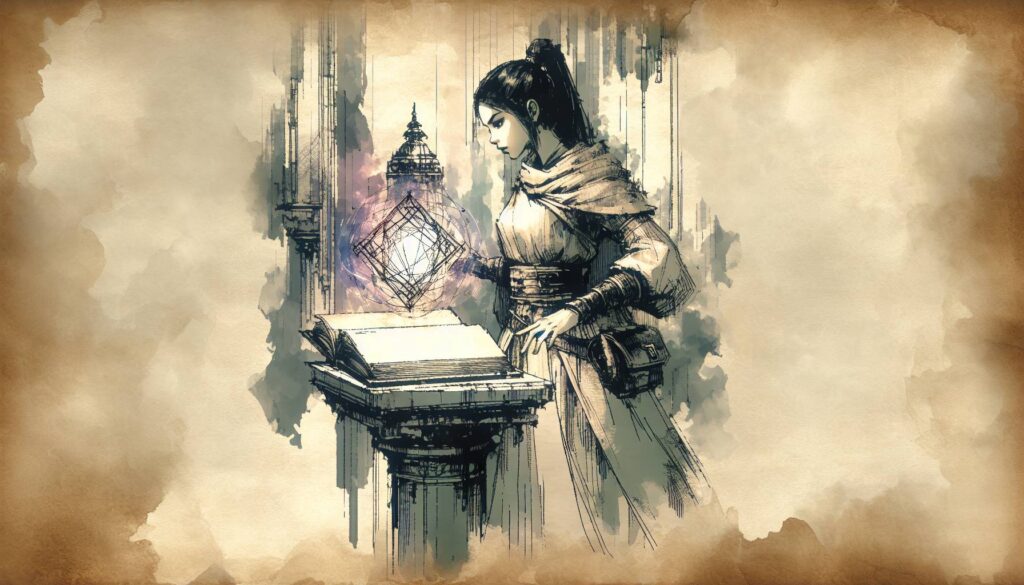
Themed Loot: Tailoring Magic Items to Your Setting
Tailoring magic items for specific campaign settings can drastically enhance their narrative resonance and player immersion. Whether your adventurers sail a windswept sea, traverse a vibrant fantasy realm, or navigate a mechanical metropolis, thematic items tie them more deeply into the storyline.
| Setting | Example Magic Item | Thematic Elements |
|---|---|---|
| Nautical | Trident of Fish Command | Control aquatic creatures, sea shanties. |
| High Fantasy Epic | Elven Leaf Armor | Enchanted with nature’s resilience, whispers of the forest. |
| Steampunk | Clockwork Amulet | Precision mechanics, gears and levers. |
| Gothic Horror | Vampire Hunter’s Kit | Holy water vials, wooden stakes, garlic. |
| Desert Wasteland | Sandrunner Boots | Swift travel over dunes, heat protection. |
| Feywild | Pixie Dust Pouch | Grants flight, dazzles with fey charm. |
| Post-Apocalyptic | Radiation Shield Cloak | Protects against magical fallout, rugged. |
| Urban Intrigue | Cloak of the City | Blends into crowds, whispers of the streets. |
| Skyborne Adventure | Sky Sailor’s Compass | Always points true, clouds as guides. |
| Jungle Expedition | Serpent’s Fang Dagger | Coated with venom, echoes of predator stealth. |
| Arctic Quest | Frost Giant’s Belt | Infuses strength, cold resistance. |
| Underwater Domain | Pearl of Water Breathing | Allows deep diving, glows with sea magic. |
Thinking outside the box when incorporating themed items invites innovation and enhances the storytelling experience. These treasures can evoke the spirit of the setting, making the mundane extraordinary and the extraordinary believable.
Loot Distribution: Keeping the Balance and the Peace
Managing loot distribution requires finesse. A fair balance ensures harmony among players and maintains the party dynamic, while strategies for equitable division can prevent squabbles and enhance roleplay.
- Round Robin Distribution: Take turns selecting items, giving everyone a chance to choose what suits them best.
- Party Pool: Share everything equally and discuss major item allocations as a group.
- Role-Based Assignment: Match items to characters’ roles or needs within the party.
- Value-Based Trading: Use a point system or currency to determine item value for fair trade.
- Item Lottery: Randomly draw lots for major items to add an element of chance.
- Needs First: Prioritize items for players who need them most for survival or role fulfillment.
- Wish Lists: Have players create lists of desired items to guide distribution decisions.
- Character Development: Award items based on alignment with character arcs or goals.
- Quest-Based Rewards: Tie items to specific quests or achievements for merit-based distribution.
- Auction: Use in-game currency for players to bid on items.
- Consensus Decision: Encourage open discussion for key item distribution, fostering team collaboration.
- Secret Santa: Use random assignments for gifting items, adding surprise and fun.
- Random Encounter Drops: Tie random encounters to unexpected item discovery.
- Story Driven: Allow narrative events to dictate item distribution to enhance storytelling.
Open communication and fairness in loot distribution can keep a party cohesive and foster camaraderie, while thoughtful roleplay can further enrich the experience for all.
When Magic Items Go Wrong: A Guide to In-Game Chaos Management
Magic items, though wondrous, are not without their foibles. Imbalances, unintended consequences, and potential storyline derailments can result from their well-intentioned inclusion in gameplay. Such chaos, while humorous, requires adept management to uphold the game’s fun and narrative cohesion.
When magic items go awry, embrace the unpredictable nature they introduce to the game. Whether it’s an overpowered sword that trivializes combat or a mischievous trinket causing unforeseen side effects, these scenarios offer opportunities for improvisation and laughter. Sharing humorous anecdotes and cautionary tales with fellow DMs can provide valuable insights into managing such situations.
Managing the chaos that magic items introduce involves adaptability and ingenuity. Realigning the story or introducing plot deviations caused by these items can keep the campaign engaging and provide fresh experiences for players. The dynamic nature of D&D allows DMs and players alike to navigate such challenges with creativity and humor.
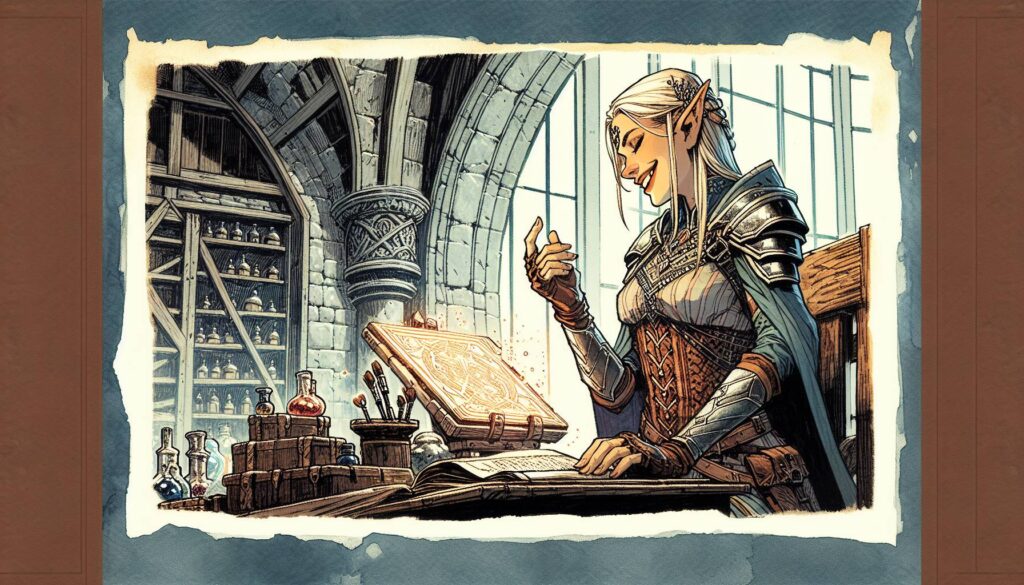
Final Thoughts on Magic Items in D&D
To conclude, magic items hold a cherished place in the world of Dungeons & Dragons, offering players more than mere tools—they’re conduits of storytelling and endless joy. They invite creativity, inspire character development, and weave together the narrative fabric of any campaign. As a DM, the role of magic item curator involves balancing power, plot, and creativity in a way that enhances the adventure for everyone involved.
Encourage flexibility and creativity when incorporating magic items into your campaign, ready to adjust and improvise as required. Each item, regardless of its original intent, can take on a life of its own once it finds its way into the hands of your adventurers. Remember, even the most meticulously planned item can become a source of laughter, drama, or inspiration once it interacts with the unpredictable world of your players.
Magic items are indeed the spice of adventure, adding layers of excitement and complexity to D&D campaigns. With careful distribution, custom tailoring, and an open mind, DMs can create unforgettable experiences that will resonate with their players long after the final dice roll. Whether they’re wielding a legendary artifact or a quirky contraption, adventurers will always find delight in the mysteries and challenges these items bring.
Ultimately, magic items are more than just a means to an end; they are the keys to endless possibilities, embodying the spirit of adventure that lies at the heart of Dungeons & Dragons. Embrace the chaos, laughter, and creativity they bring, for these elements are what make the game truly magical.

